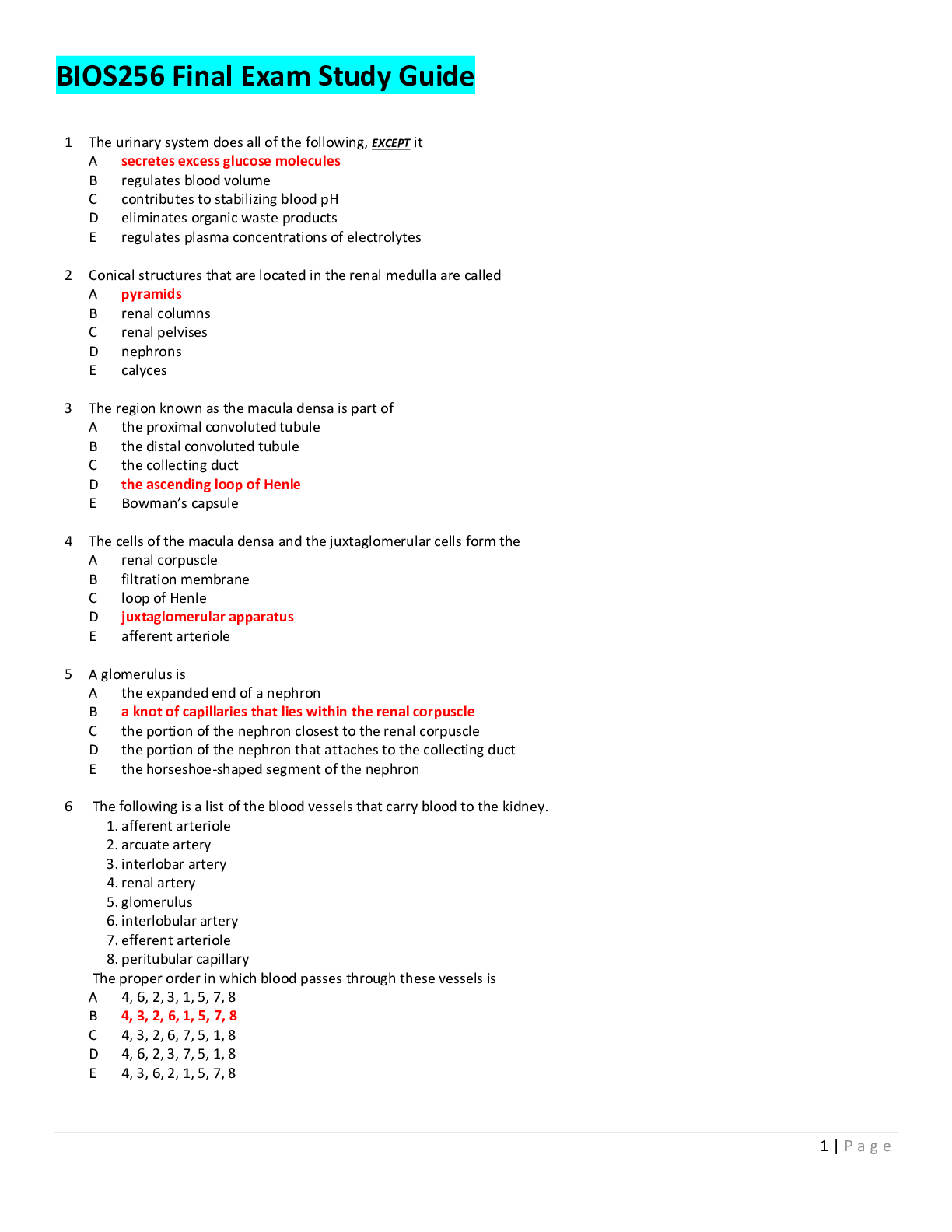Information Technology > QUESTIONS & ANSWERS > WGU C846 : Practice Tests, Top Exam Questions and answers, rated A+, verified. (All)
WGU C846 : Practice Tests, Top Exam Questions and answers, rated A+, verified.
Document Content and Description Below
WGU C846 : Practice Tests, Top Exam Questions and answers, rated A+, verified. What is the purpose of the service configuration management practice? A) To ensure that services deliver agreed le... vels of availability to meet the needs of customers and users B) To ensure that service availability and performance are maintained at an adequate level in case of a disaster C) To set clear business-related targets for service performance so that delivery of a service can be properly assessed, monitored, and managed against the targets D) To ensure that accurate and reliable information about the configuration of services and the CIs that support them is available when and where it's needed - ✔✔-To ensure that accurate and reliable information about the configuration of services and the CIs that support them is available when and where it's needed Which of the following is not an example of a supportive service-desk technology? A) Big-bang deployment B) Incorporating computer-telephony integration C) Workforce management and resource planning systems D) Configuration management systems - ✔✔-Big-bang deployment Which term is defined as a cause—or potential cause—of one or more incidents? A) Known error B) Failure C) Problem D) Event - ✔✔-Problem Which of the following is not an approach to continual improvement? A) Lean methods for providing perspectives on the elimination of waste B) Agile methods for focusing on making improvements incrementally at a cadence C) Procedures for managing information security-related changes, such as firewall configuration changes D) DevOps methods for working holistically and ensuring that improvements are not only designed well but applied effectively - ✔✔-Procedures for managing information security-related changes, such as firewall configuration changes Which type of changes are not typically included in a change schedule? A) Exception changes B) Emergency changes C) Standard changes D) Normal changes - ✔✔-Emergency changes Which method advocates a "systems view" that emphasizes close collaboration between enterprise governance, service teams, software development, and technology operations? A) Deployment management B) Risk management C) DevOps D) Relationship management - ✔✔-DevOps Which of the following statements about the plan value chain activity are true? Each correct answer represents a complete solution. Choose all that apply. A) It outputs a product and service portfolio for the engage activity. B) Key outputs are strategic, tactical, and operational plans. C) A key output is service performance information for design and transition. D) It receives inputs regarding knowledge and information about third-party service components from the engage value chain activity. - ✔✔-It outputs a product and service portfolio for the engage activity. Key outputs are strategic, tactical, and operational plans. It receives inputs regarding knowledge and information about third-party service components from the engage value chain activity. What is the term for any financially valuable component that can contribute to the delivery of an IT product or service? A) Asset B) Incident C) Event D) Configuration item - ✔✔-Asset Which of the following is not an activity of information security management? A) It must be driven from the senior-most level of the organization, according to clearly understood governance requirements and organizational policies. B) It creates controls that each practice must consider when planning how work is to be done. C) In high-velocity environments, information security is integrated as much as possible into the daily work of development and operations. D) It creates closer, more collaborative relationships with key suppliers to uncover and realize new value and reduce the risk of failure. - ✔✔-It creates closer, more collaborative relationships with key suppliers to uncover and realize new value and reduce the risk of failure. When making improvements, what is the benefit of employing the continual improvement model? A) It balances the need to make beneficial changes that deliver additional value with the need to protect customers and users from the adverse effect of change. B) It can be applied to any type of improvement, from high-level organizational changes to individual services and CIs. C) It manages the people aspects of change to ensure that improvements and organizational transformation initiatives are implemented successfully. D) Stakeholders' satisfaction is high, and a constructive relationship between the organization and stakeholders is established and maintained. - ✔✔-It can be applied to any type of improvement, from high-level organizational changes to individual services and CIs. Which statements about problem management are true? Reduce the likelihood and impact of incidents by identifying actual and potential causes of incidents. Manage workarounds and known errors. Make new and changed services and features available for use. Record and report selected changes of state identified as events. A) 3 and 4 B) 1 and 3 C) 1 and 2 D) 2 and 4 - ✔✔-1 and 2 The purpose of the SVS is to ensure that: A) there is a need or desire for products and services among the organization's internal or external consumers. B) the organization defines value streams. C) the organization continually co-creates value with all stakeholders via the use and management of products and services. D) an organization is directed and controlled. - ✔✔-the organization continually co-creates value with all stakeholders via the use and management of products and services. If the improvement has delivered the expected value, the focus of the initiative should shift to marketing the success and reinforcing any new methods introduced. Which of the following steps of the continual improvement model describes this? A) How do we keep the momentum going? B) Where are we now? C) Where do we want to be? D) Take action. - ✔✔-How do we keep the momentum going? How is value co-created? A) By establishing mutually beneficial, interactive relationships with customers, thus empowering them to become creative contributors to the service value chain B) By the cooperation of partners and suppliers C) By enabling the organization to maintain the alignment of its operations with the strategic direction determined by its governing body D) By providing services to business customers that are fit for their purpose, stable, and so reliable that businesses perceive the service organization offering them as a trusted provider - ✔✔-By establishing mutually beneficial, interactive relationships with customers, thus empowering them to become creative contributors to the service value chain What two skills are required for service-level management? A) Engagement and listening B) Detailed understanding of cloud-based infrastructure and risk management C) Troubleshooting and supplier knowledge D) Listening and expediency - ✔✔-Engagement and listening Which of the following is not a key input of the deliver and support value chain activity? A) Portfolio, architectures, and policies provided by plan B) Improvement status reports from improve C) Knowledge and information about new and changed service components and services from design and transition and obtain/build D) User support tasks, and knowledge and information about third-party service components provided by engage - ✔✔-Portfolio, architectures, and policies provided by plan Which of the following statements are true regarding the interaction of guiding principles? Each correct answer represents a complete solution. Choose all that apply. A) Organizations should use only one principle in each situation. B) Not all guiding principles are critical in every situation, but they should all be reviewed continuously to determine how appropriate they are to each situation. C) It's important to recognize that all guiding principles interact with and depend upon each other. D) Organizations should consider the relevance of each of the guiding principles and how they apply together. - ✔✔-Not all guiding principles are critical in every situation, but they should all be reviewed continuously to determine how appropriate they are to each situation. It's important to recognize that all guiding principles interact with and depend upon each other. Organizations should consider the relevance of each of the guiding principles and how they apply together. How should problems be prioritized and managed for analysis? Each correct answer represents a complete solution. Choose all that apply. A) According to their potential impact and probability B) By identifying faulty components C) According to the risks that they pose D) According to the availability of staff capable of addressing each problem - ✔✔-According to their potential impact and probability According to the risks that they pose Which service value system component is an ongoing organizational activity of continuous re-evaluation performed at all organizational levels to ensure that performance continually meets stakeholders' expectations? A) Guiding principle B) Service value chain C) Continual improvement - ✔✔-Continual improvement In the continual improvement model, once you have identified the destination for your organization, what is the next question to ask? A) Where are we now? B) Did we get there? C) What is the vision? D) How do we get there? - ✔✔-How do we get there? Which of the following steps of the continual improvement model describes the below function? A plan for addressing the challenges of the initiative can be created by understanding the vision of the improvement and the current and target states and combining that knowledge with subject matter expertise. A) How do we get there? B) Where do we want to be? C) What is the vision? D) Take action. - ✔✔-How do we get there? Which of the following statements describes the service value system? A) A model that helps to guide organizational decisions and actions, and ensure a shared understanding and unified approach to ITSM throughout the organization B) A key component of the ITIL 4 framework that describes how the components and activities of an organization interact to create value through IT-enabled services C) A system that enhances the flexibility of the service value chain by supporting multiple chain activities, thereby providing a comprehensive and versatile tool set for ITSM practitioners D) A flexible model for the creation, delivery, and continual improvement of services - ✔✔-A key component of the ITIL 4 framework that describes how the components and activities of an organization interact to create value through IT-enabled services [Show More]
Last updated: 1 year ago
Preview 1 out of 33 pages
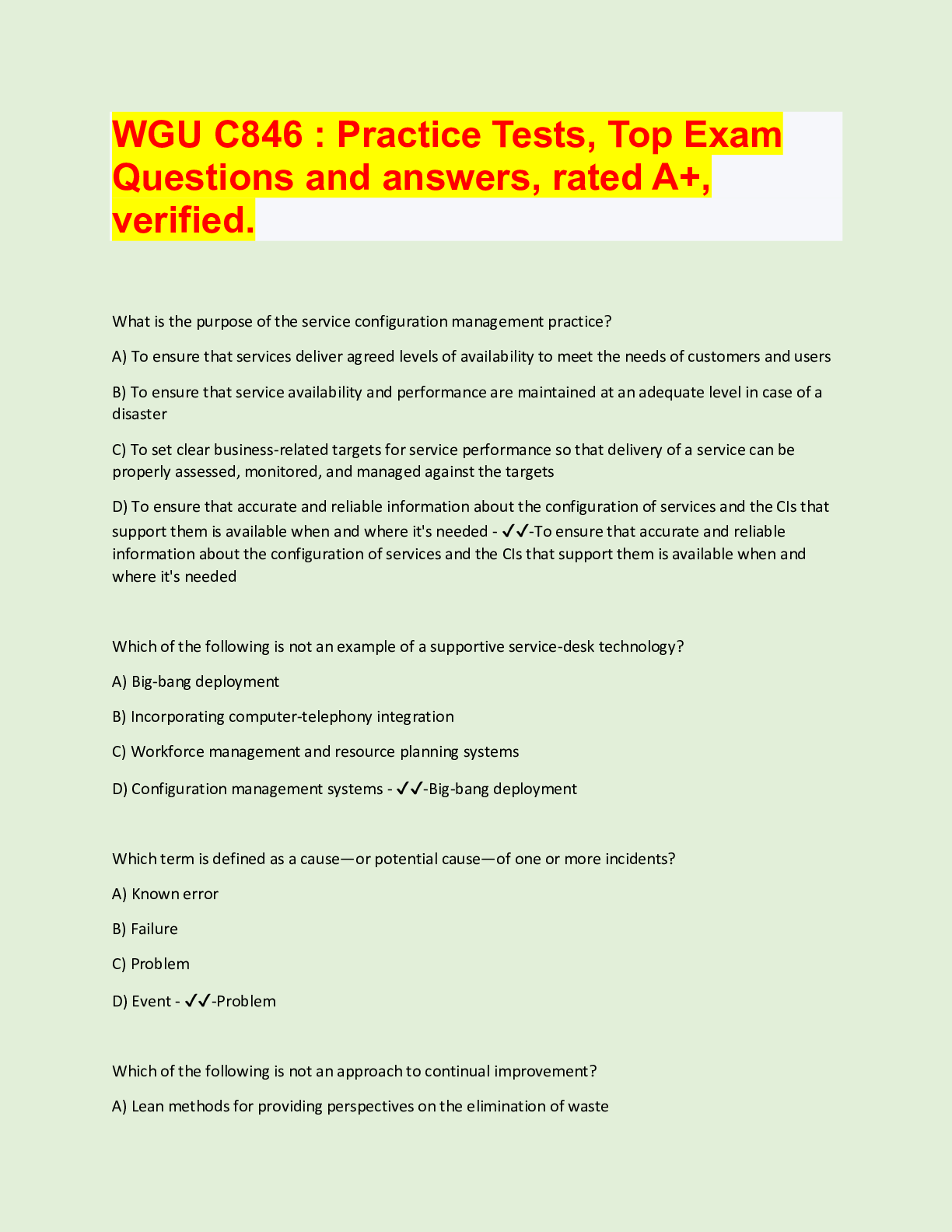
Also available in bundle (1)
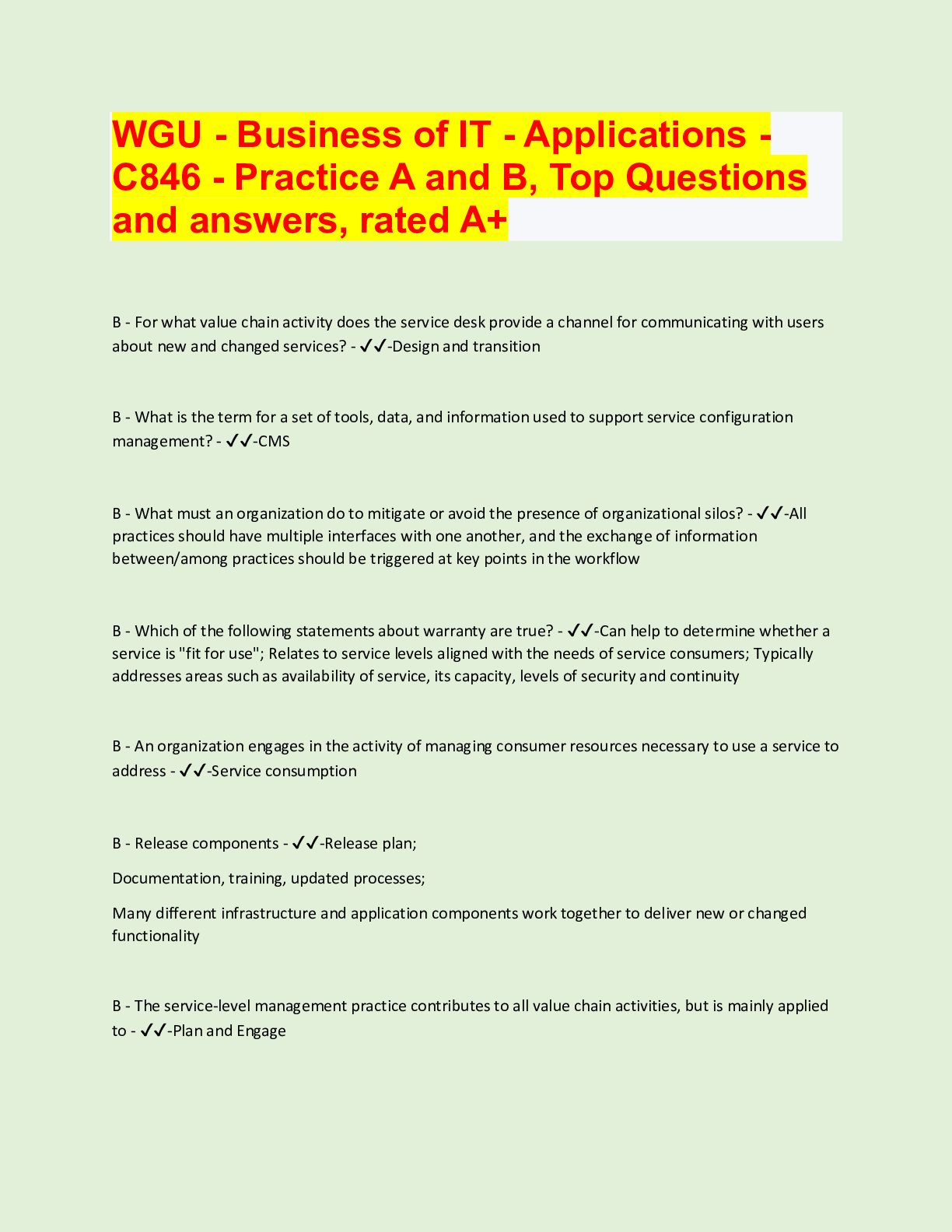
C846 WGU BUNDLE, Top exam Questions and answers, Download for easy revision.
C846 WGU, Top Exam Questions and answers, graded A+. Verified. 18 versions.
By Topmark 1 year ago
$28
18
Reviews( 0 )
Document information
Connected school, study & course
About the document
Uploaded On
Mar 16, 2023
Number of pages
33
Written in
Additional information
This document has been written for:
Uploaded
Mar 16, 2023
Downloads
0
Views
59


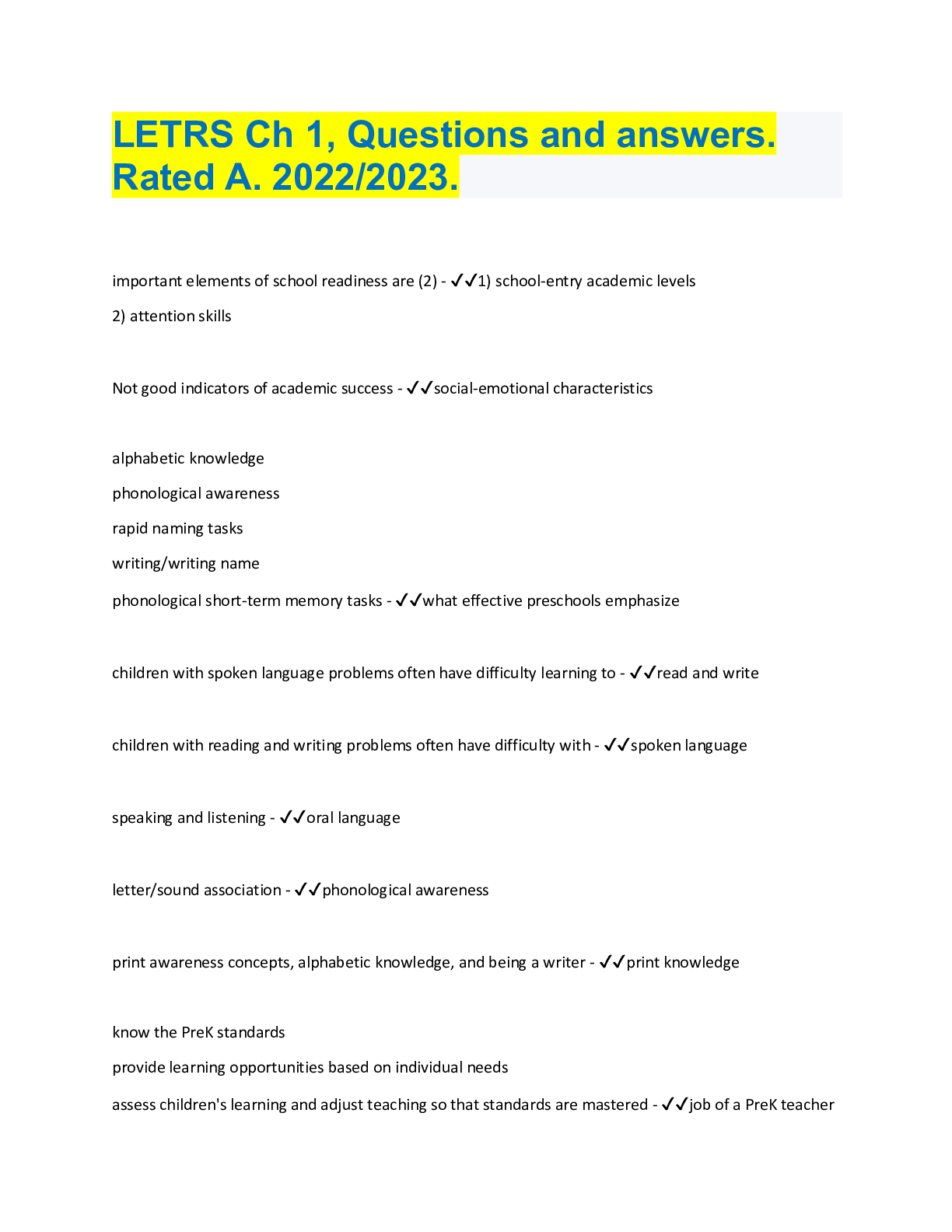


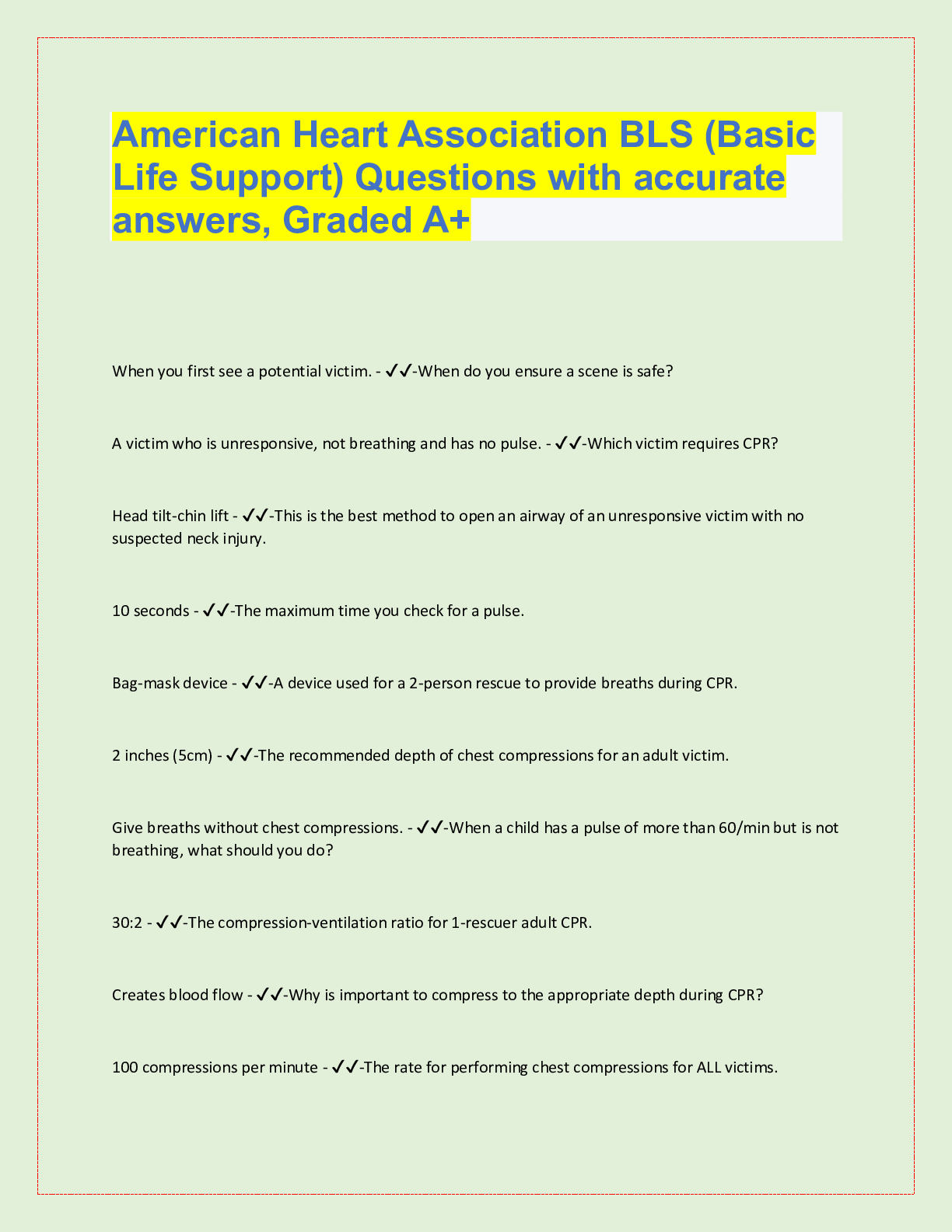



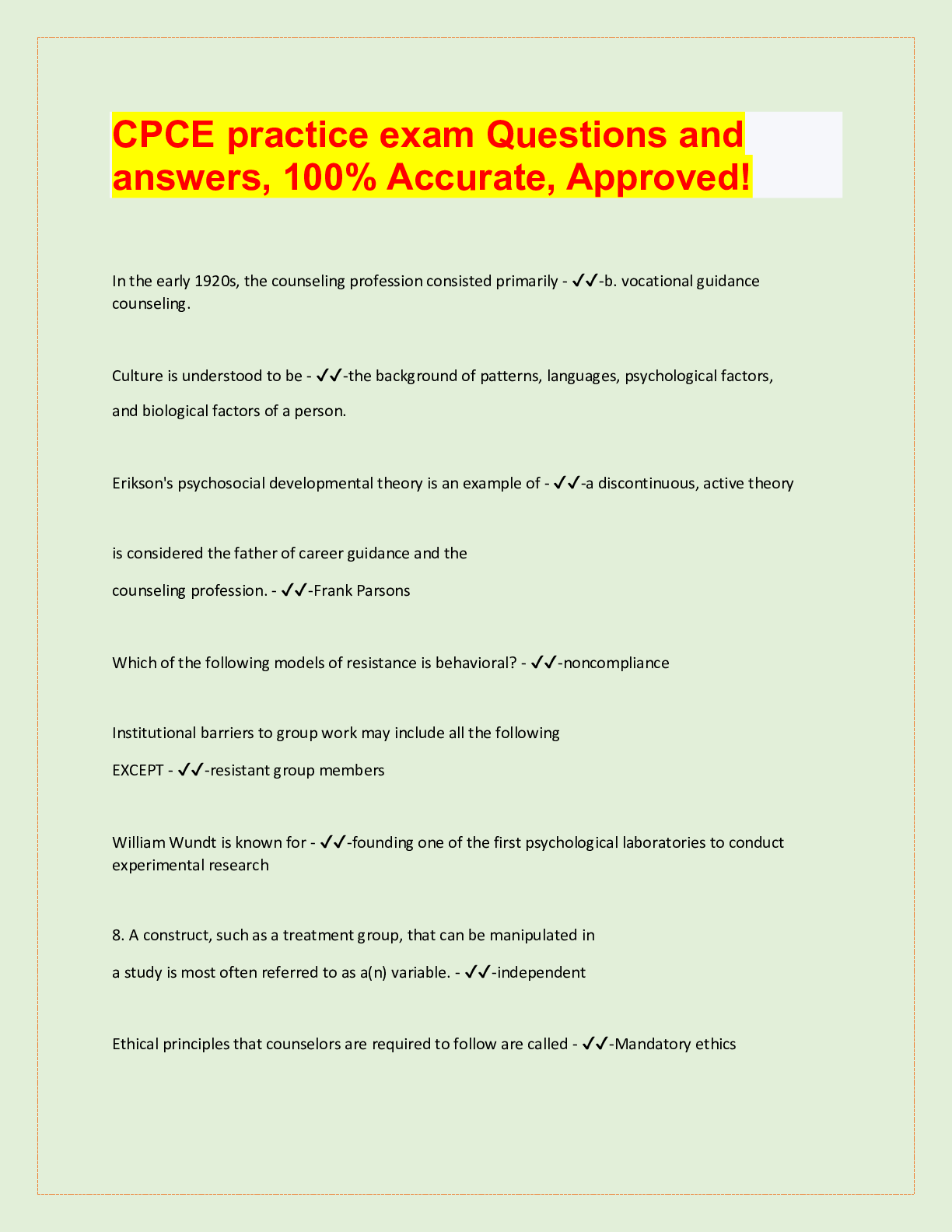




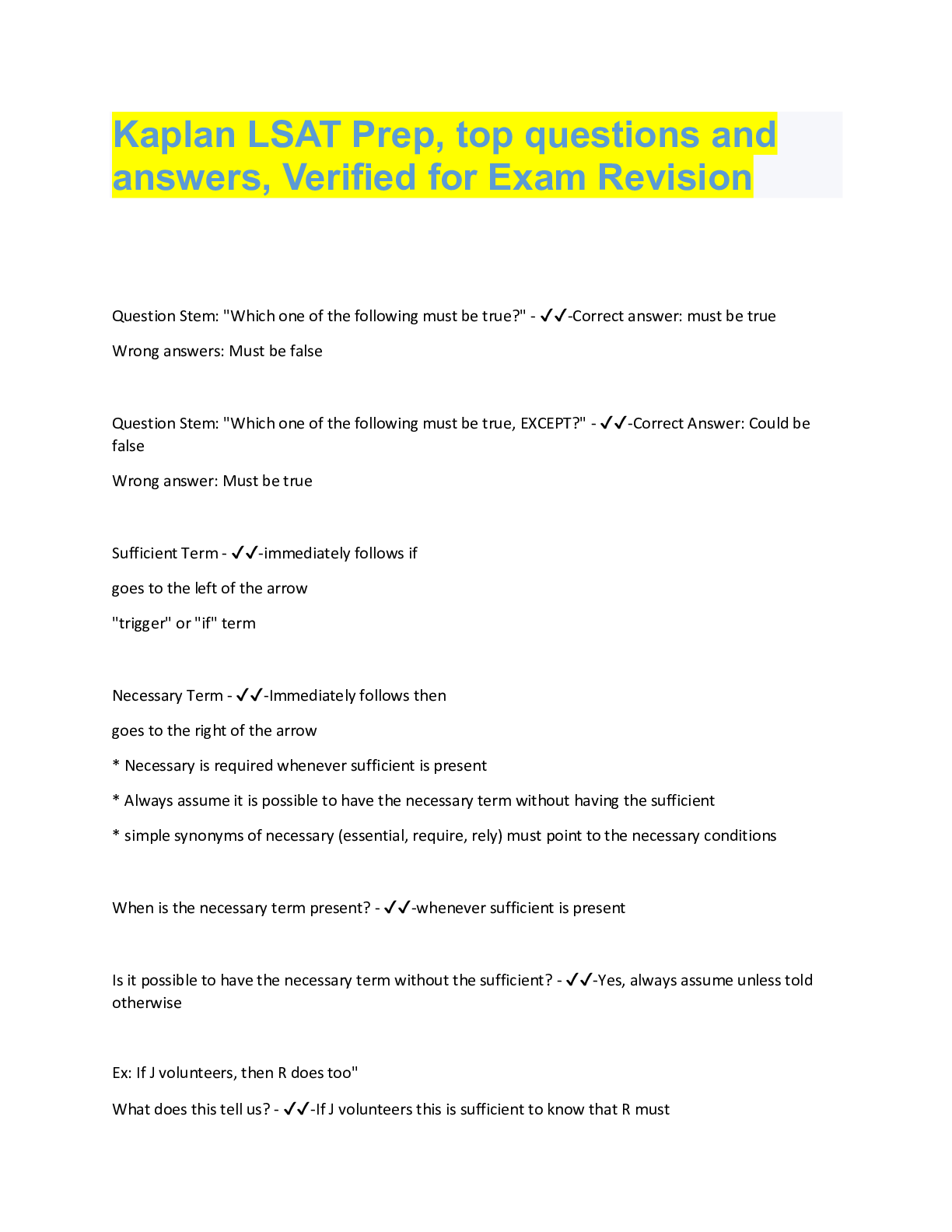
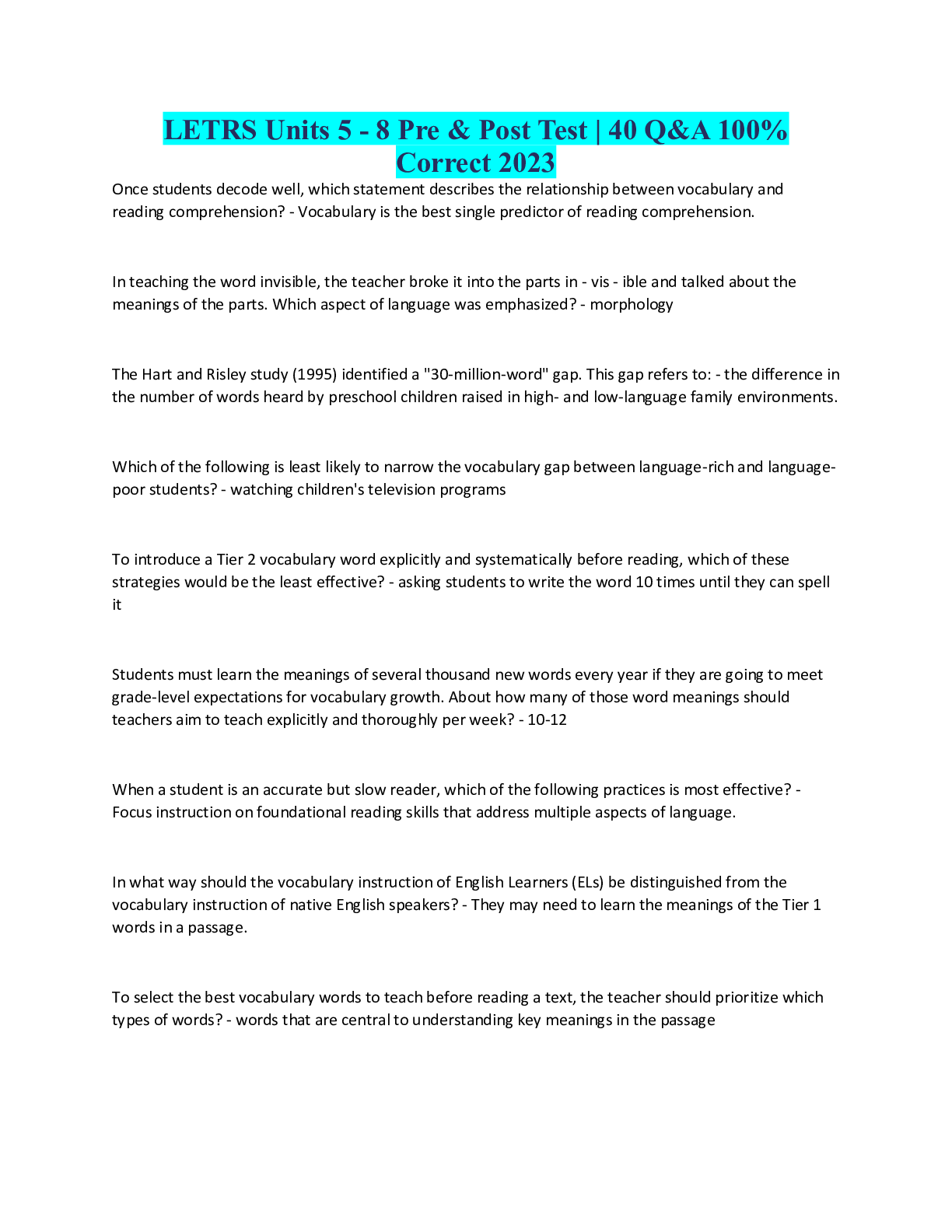
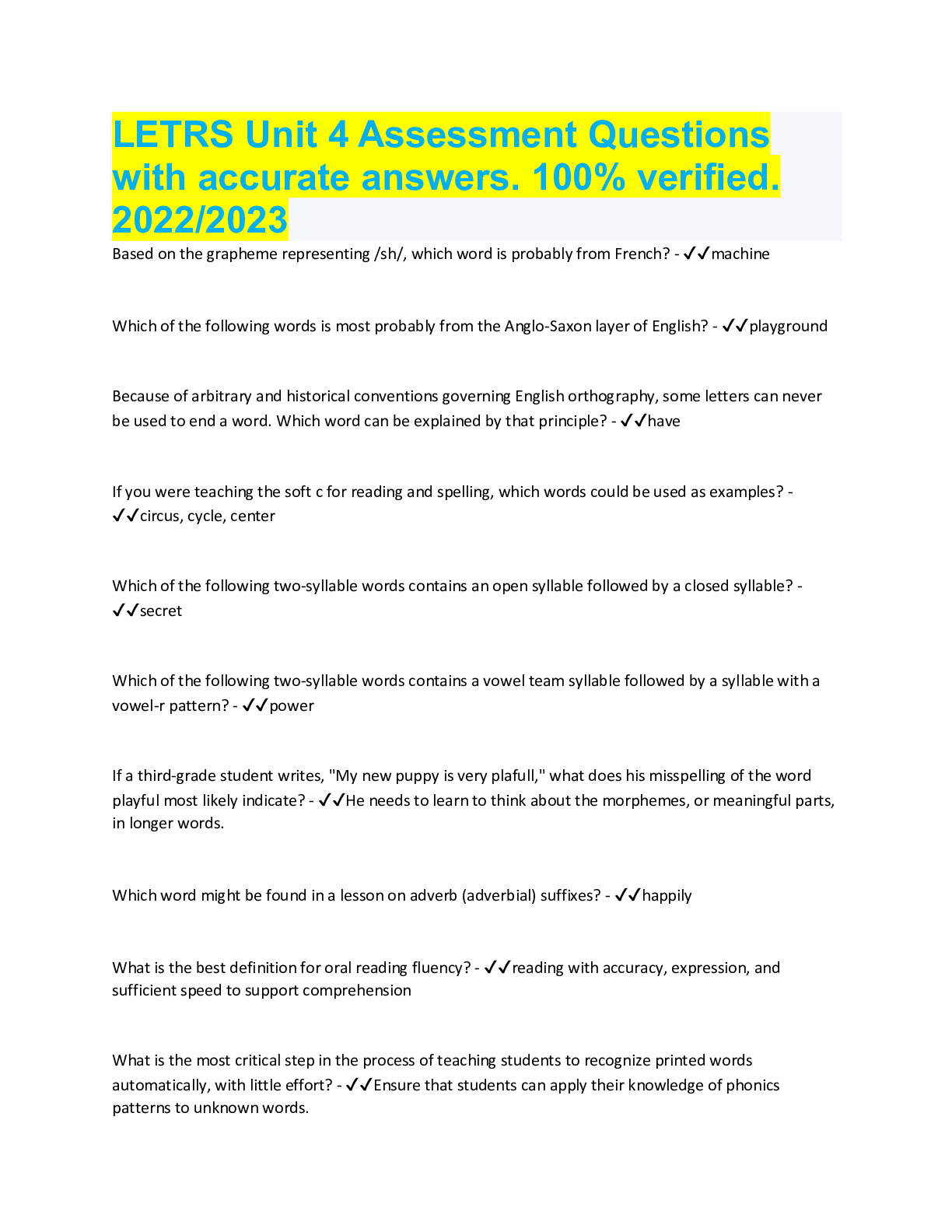




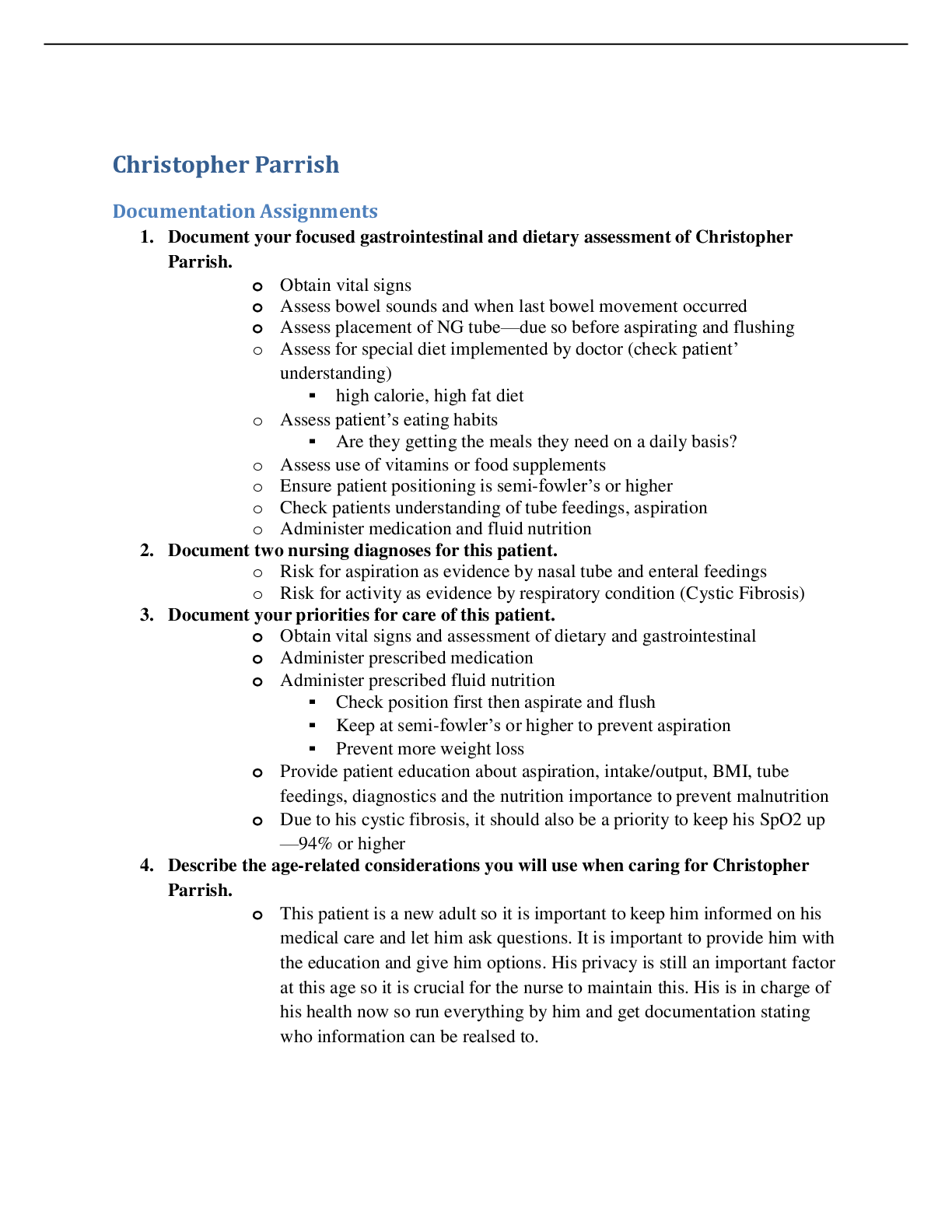
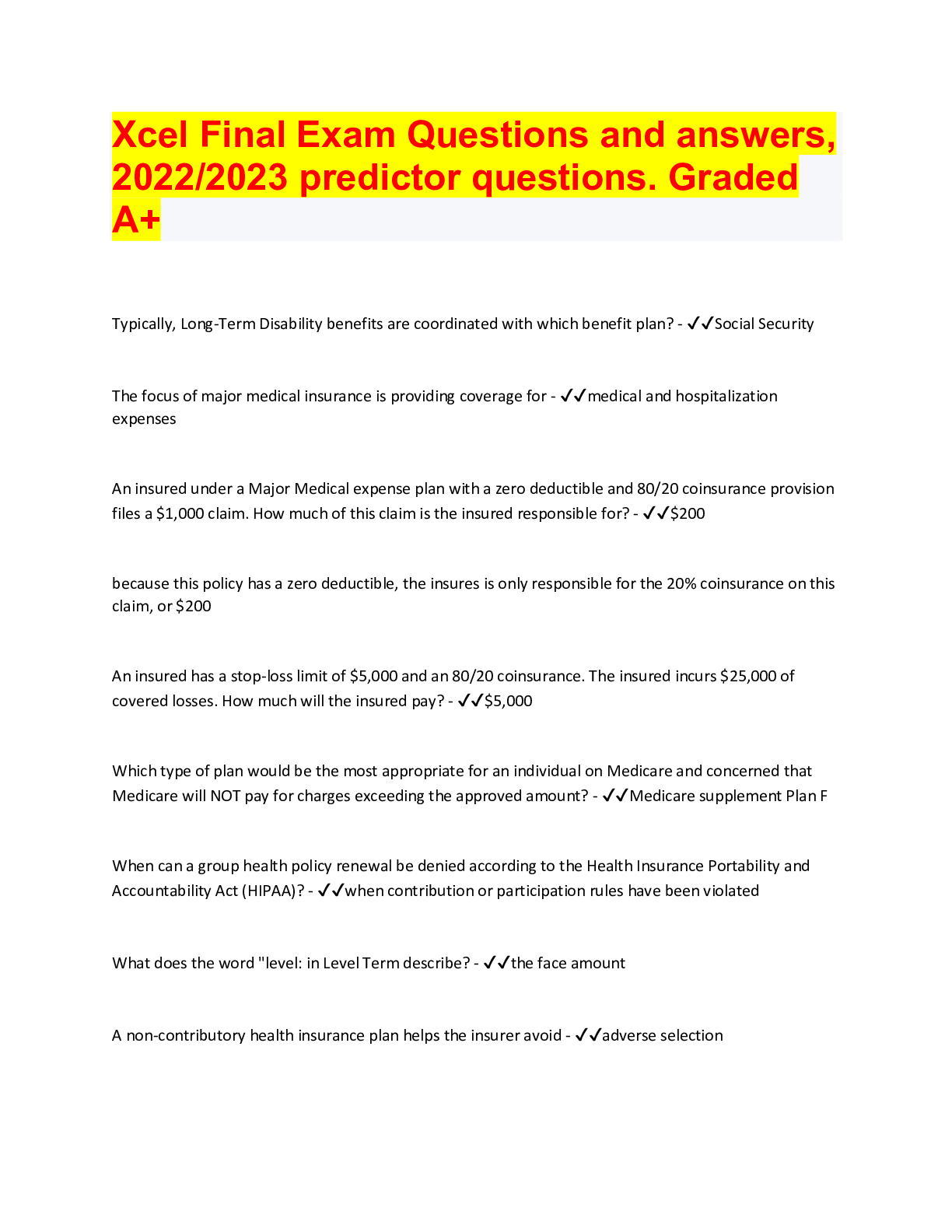
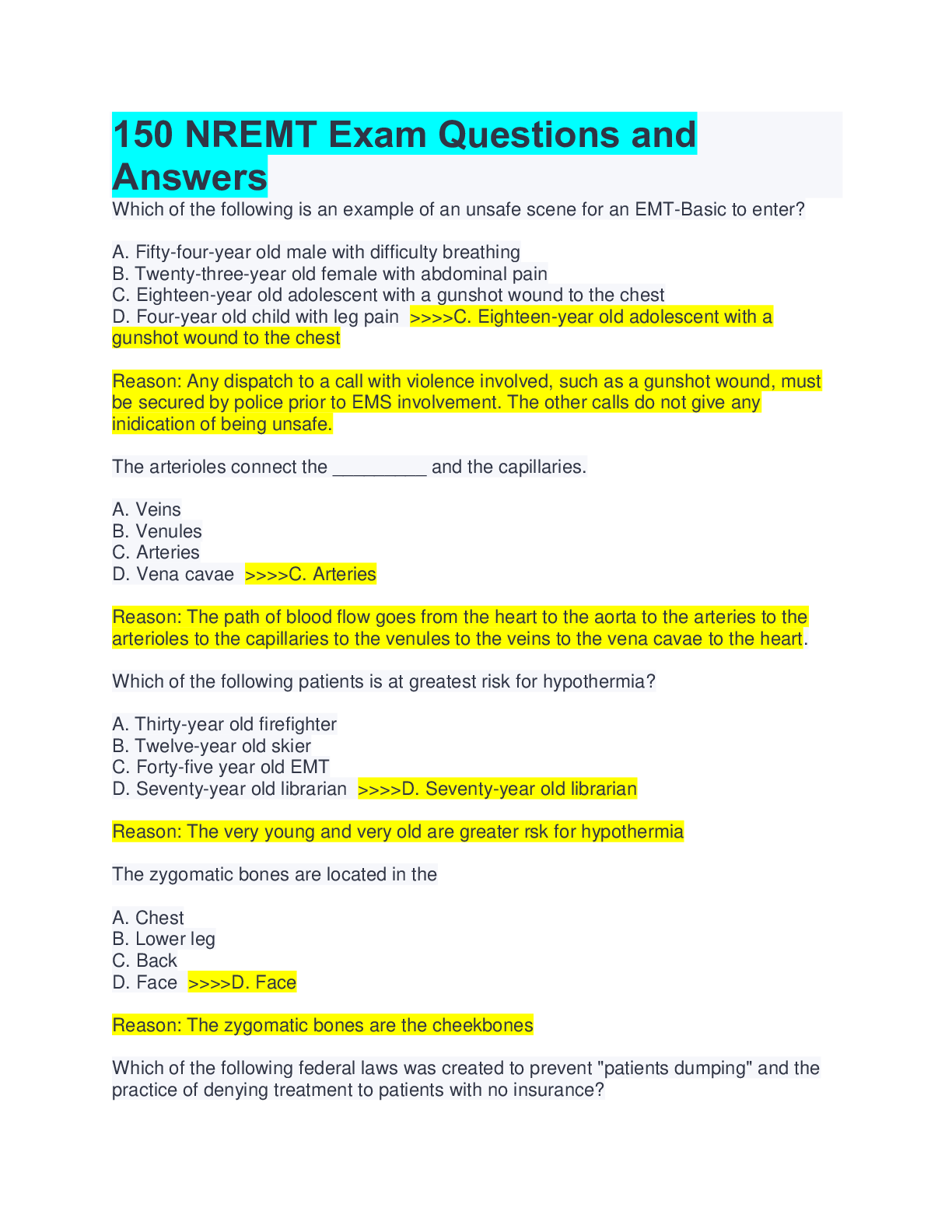


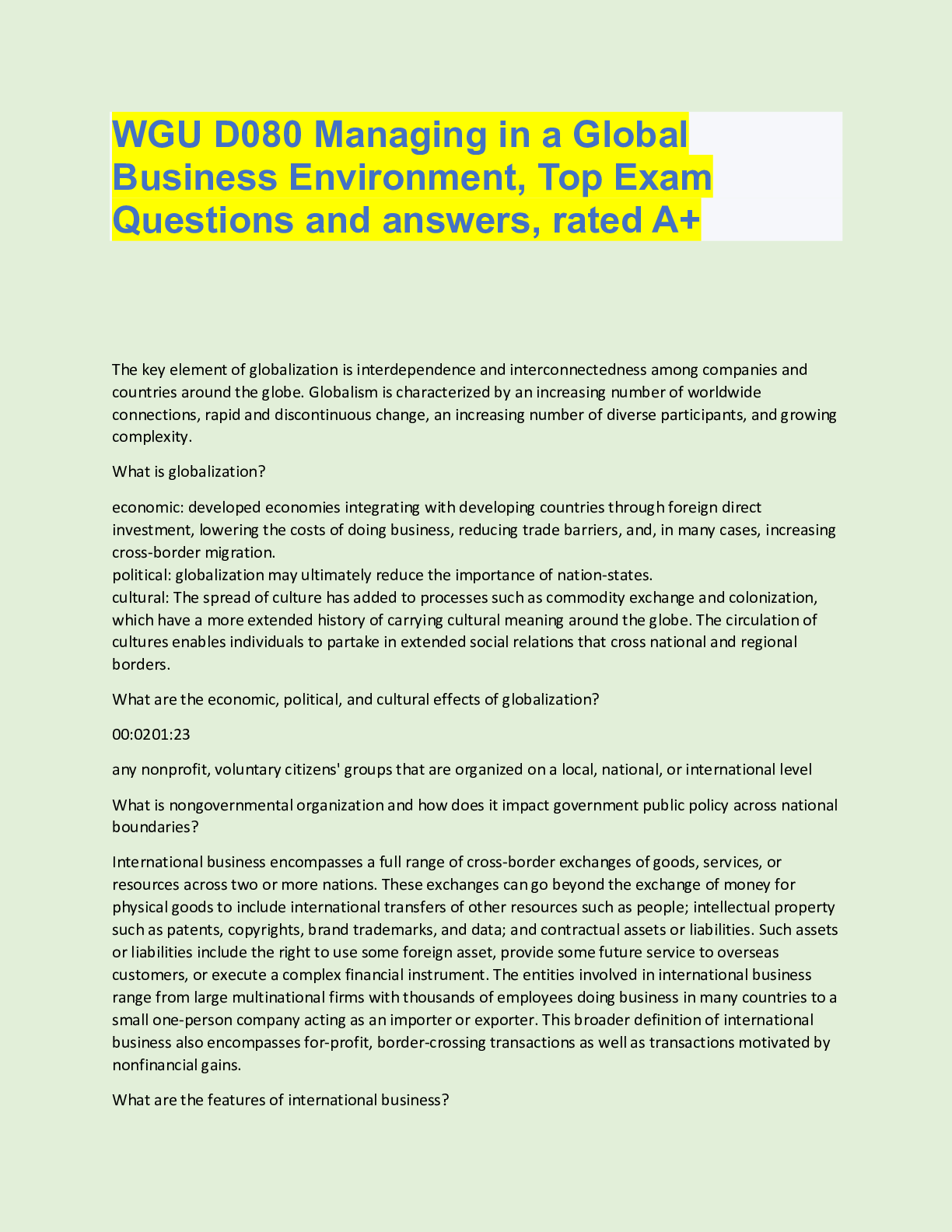
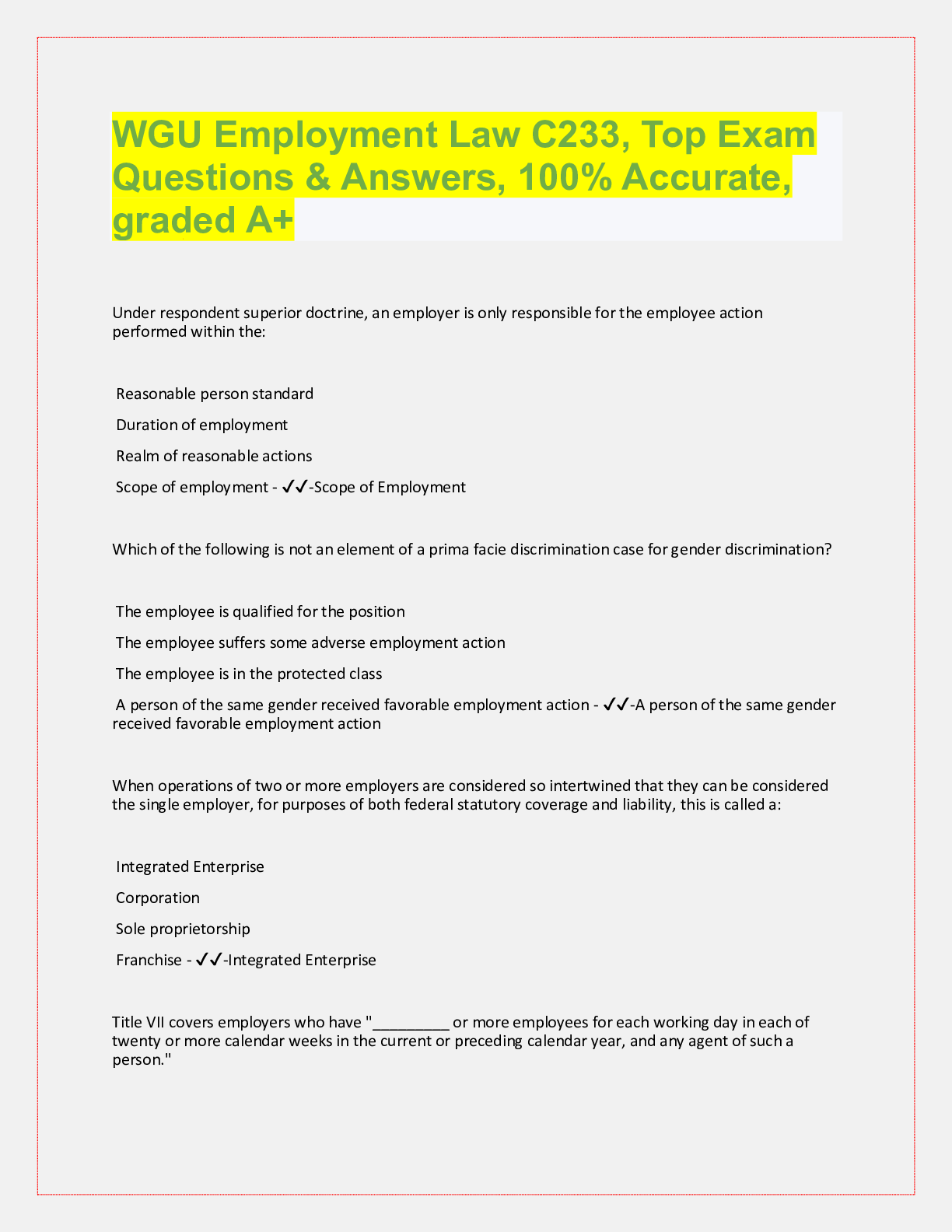
, (A Grade), Questions and Answers, All Correct Study Guide, Download to Score A.png)
, Questions and Answers, All Correct Study Guide, Download to Score A.png)

